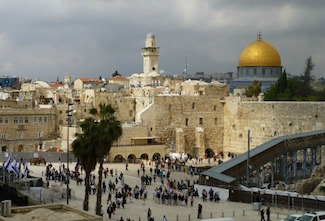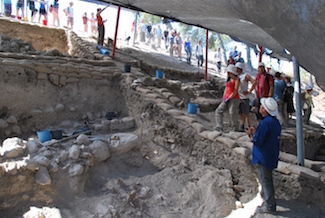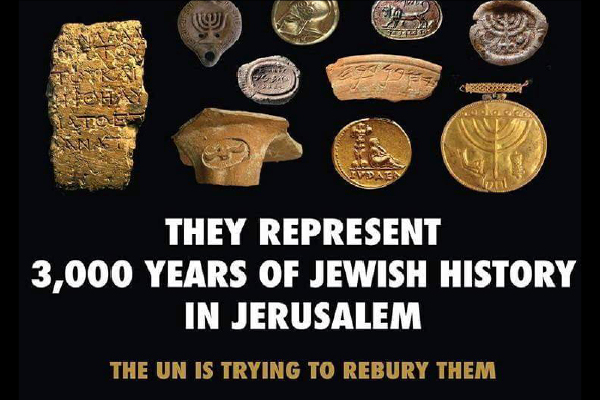No Sense Denying the Jewish Connection to Jerusalem
By Stephen M. Flatow

The Western Wall and Temple Mount in Jerusalem’s Old City. Photo: Paul Arps via Wikimedia Commons.
Archaeologists have uncovered even more evidence of the ancient Jewish connection to Jerusalem — this right after UNESCO and the Palestinian Authority (PA) declared that Jews have no ties to the holy city. Talk about irony.
The latest discovery is a site where the Roman army assaulted Jewish forces guarding the outer walls of Jerusalem, during the Second Temple period. The find further discredits the lies of the UN and the PA.
The Romans were attacking Jewish forces; no evidence was found of any Palestinian forces in the area. The assault took place during the Second Temple period — the temple that the PA says never existed.

Every time archaeologists dig in Israel, another piece of the Palestinian propaganda line crumbles. Earlier this year, scientists unearthed two ancient document seals in Jerusalem, dating to the late eighth century or early seventh century BCE. The script on the seals is in Hebrew, not Arabic or any other language connected to Arabs or Muslims.
One of the seals bears the name of a man, “Sa’adyahu ben Shebnayahu.” The other is the name of a woman, “Elihanah bat Goel” (or Gael). Jewish names. Not Arab or Muslim or Palestinian. The archaeologists note that the names were “in typical Judean fashion for this time period.”
Another important archaeological discovery earlier this year was the discovery of the world’s oldest glass kilns, alongside a railroad track at the foot of Mount Carmel, near Haifa. Professor Ian Freestone of London’s University College, a specialist in the identification of the chemical composition of glass, noted that the kilns prove that “Israel constituted a production center on an international scale — hence its glassware was widely distributed throughout the Mediterranean and Europe.”

Roman-era glass kilns unearthed alongside newly laid train tracks in northern Israel in 2015. (Assaf Peretz, courtesy of Israel Antiquities Authority)
The kilns date from around the year 400 C.E., some 300 hundred years after the Romans destroyed the Second Temple, killed an estimated 600,000 Jews, and destroyed more than 1,000 Jewish cities and towns.
Despite that devastation, the Jews were so attached to the Land of Israel that they rebuilt their society, to the point of serving as a glass-production center that exported its wares throughout the Roman Empire. One of the most famous discoveries in this field is an edict by the Roman emperor Diocletian, in which he set the prices for what he called “Judean glass.”
Not “Palestinian glass,” but “Judean glass.” Because everyone knew that Judea was the name of the region. That’s what the Bible called it. That’s what historians have called it for more than 2,000 years.
That is, until UNESCO and the Palestinian Arab propaganda machine came along.

Stephen M. Flatow, an attorney in New Jersey, is the father of Alisa Flatow, who was murdered in an Iranian-sponsored Palestinian terrorist attack in 1995.








